
Laboratory of Archaeobotany and Palaeoecology
Palynology - pollen analysis
Palynology (pollen analysis) is a branch of archaeobotany that applies botanical and paleobotanical techniques to archaeological research. It deals with the analysis and historical interpretation of pollen grains found in the sediments of archaeological sites and other anthropogenic formations (e.g. wells, waste pits, fields).
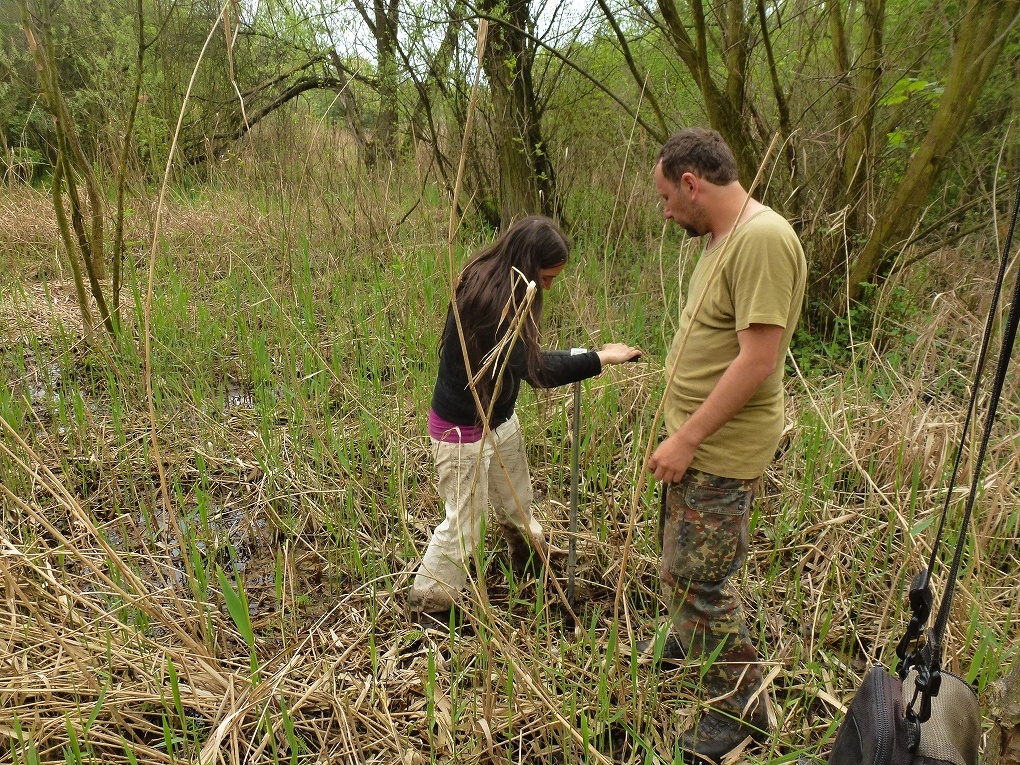
Field work. Photo: J. Novák
Archaeological palynology reveals the character of ancient landscapes, agricultural practises, and human settlements. It is one of the key tools unveiling the history of common life. In contrast to classical methods used in archaeology, the description of the human impact on the landscape, derived from the pollen record, is more detailed and complex. A disadvantage of this method is the requirement for a special type of sediment: only the permanent contact of the sediment layer with a wet environment ensures the good preservation of pollen grains.
Most results from the Czech Republic have been gathered from medieval features in larger Czech towns. The reason is the high frequency of archaeological rescue excavations in these towns and the sufficiency of sediments suitable for pollen preservation and recovery. The most suitable features are medieval wells, cesspits of various origin and use, and also diverse deposits, mostly with organic material.
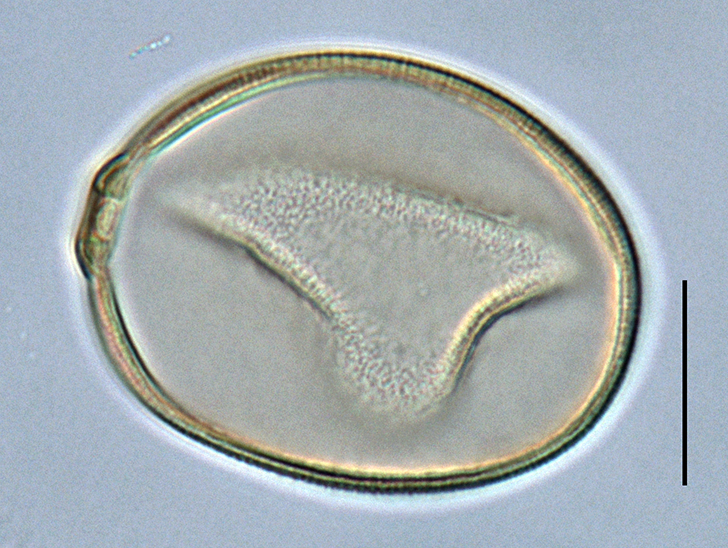
Pollen grains of oats (Avena sativa). Photo: P. Marešová
What has been found so far?
Pollens are usually present in high quantity and rich in species. The information derived from the pollen spectrum concerns both the close vicinity of the deposit (e.g. composition of vegetation next to the well or sump) and the composition of arable crops and plants used in the kitchen or husbandry. Ruderal plants and plants adapted to trampling are frequently detected. The occurence of certain species can indicate soil eutrophication.
The vegetation cover of a larger area (natural or semi-natural stands surrounding the settlement) can only be reconstructed on rare ocasions. The further back in the past the more difficult it is to detect some signs of presence of man and his impact on the landscape in pollen spectra. Neolithic settlement and landscape disturbance can only be documented by cereal pollen in cases where sediment suitable for pollen analysis is available next to the settlement.
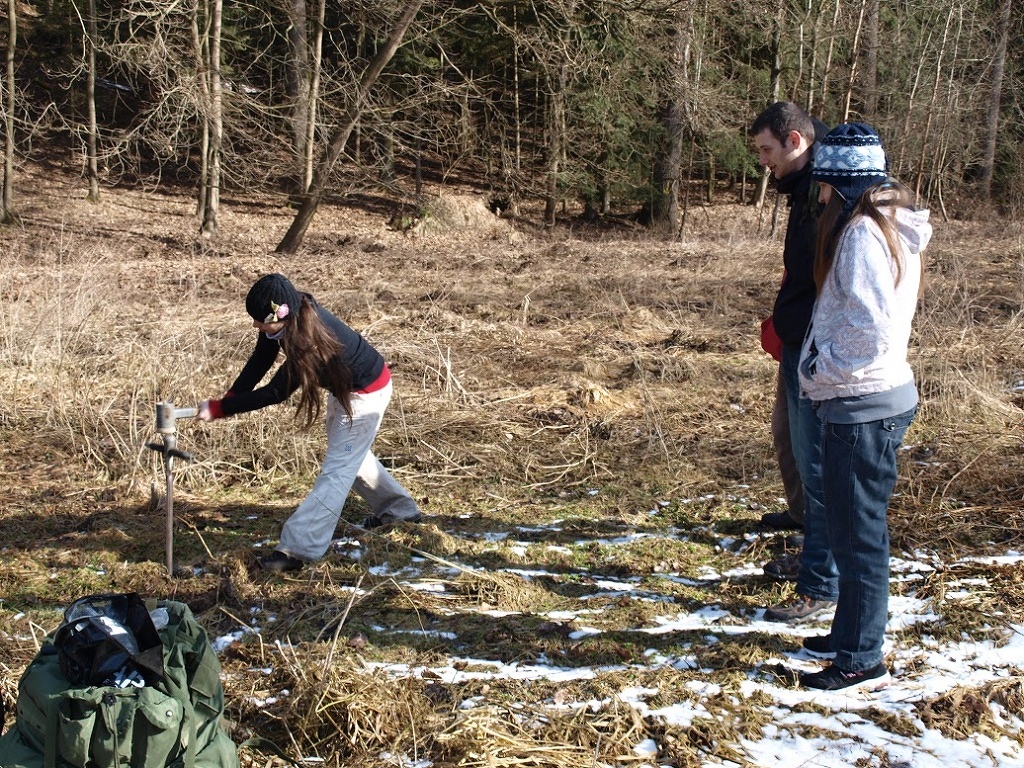
Field work. Photo: L. Bílý
What should be noted?
Pollen grains of cereals and other types of synanthropic plants usually prove Neolithic settlement and disturbance of the surrounding original environment only when suitable sediment for palynoanalytical research is found in the immediate vicinity of the settlement. Proving the presence and activity of Mesolithic man using pollen analysis is already a problem. It is generally believed that the Mesolithic group had about as much influence on the vegetation cover as game herds, which means that there is a lack of plant-based, clearly anthropogenic indicators that would prove Mesolithic activity at individual sites.
The disadvantage of pollen analysis is that not every type of sediment is suitable for it. An important moment of successful palynoanalytical research for the needs of archaeologists is finding suitable material - preferably sediment that has been in contact with a moist environment.
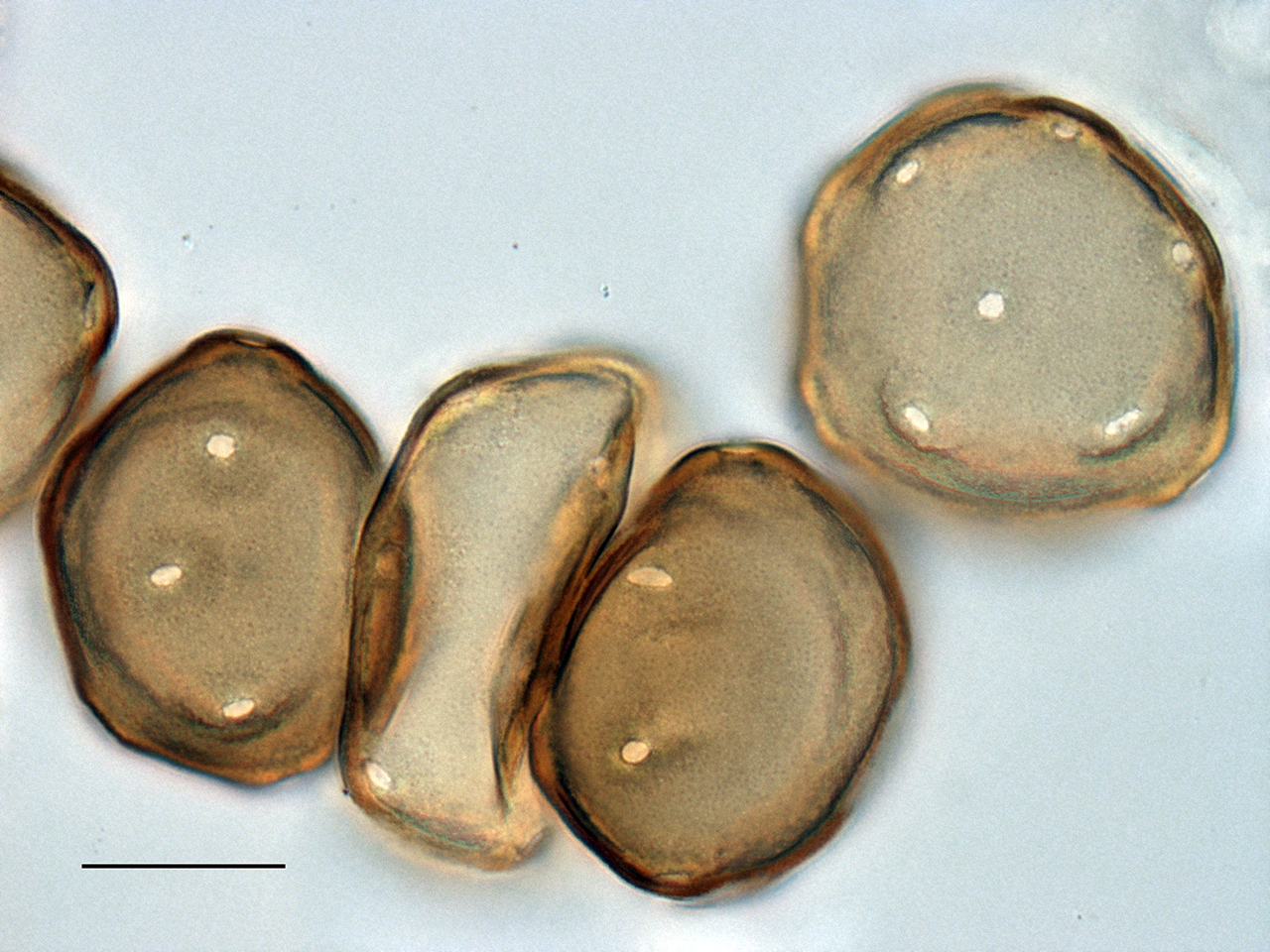
Pollen grains of walnut (Juglans regia). Photo: P. Marešová
Pollen analysis can usually help in the following ways:
- The reconstruction of both the natural and man-affected environment over a certain time period and geographic area.
- The reconstruction of changes in vegetation cover induced by humans.
- The reconstruction of agricultural practises, pasture, gathering of plants, ploughing, establishing and deserting settlements, forest clearing and burning, selective logging etc.
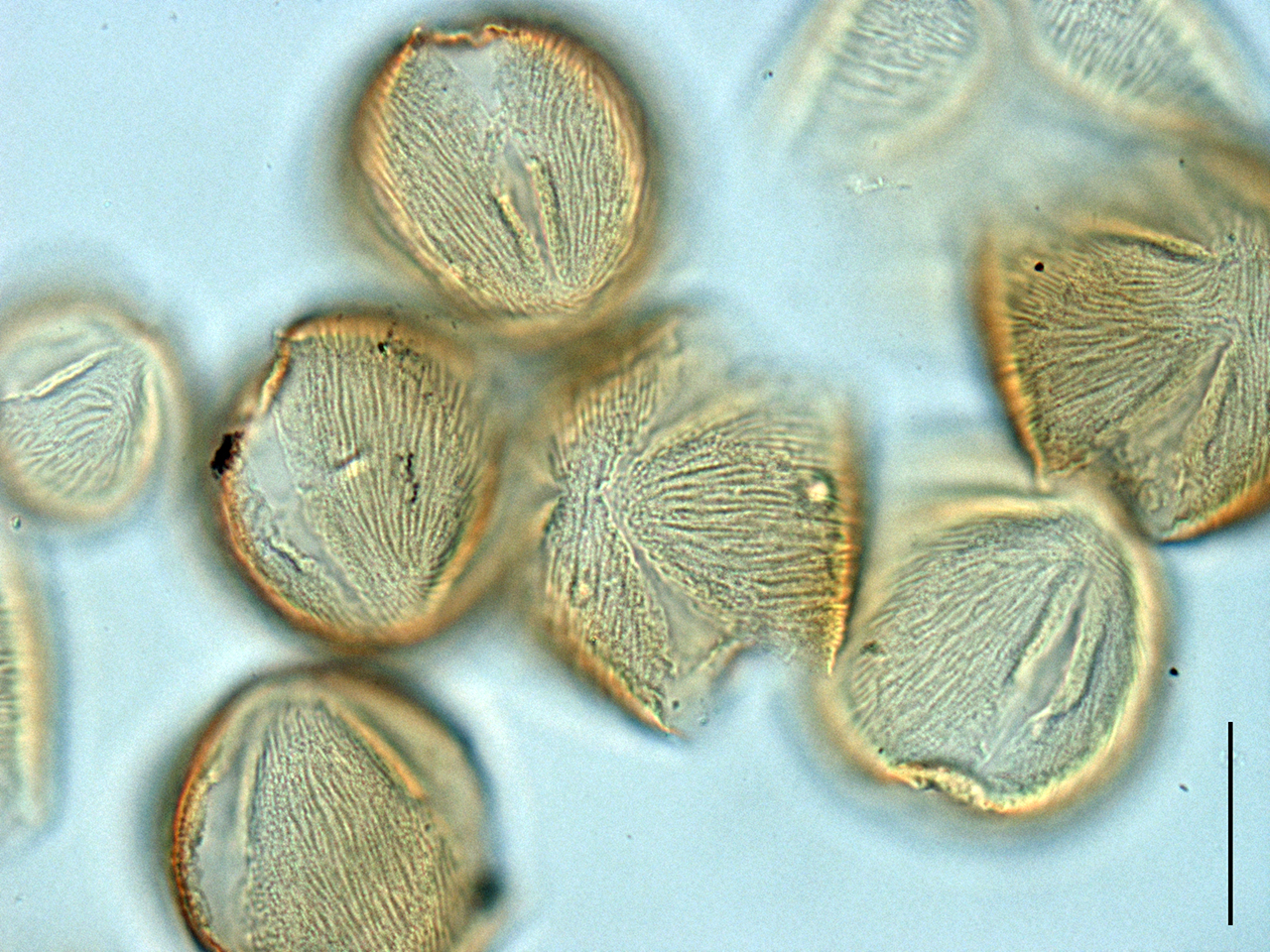
Cherry (Cerasus avium) pollen grains. Photo: P. Marešová